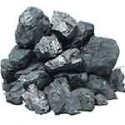Coal and its importance in the past

Coal was the fuel that once kept the UK and many other countries running, and consequently impacted on the everyday lives of ordinary people – see the above menu or the search box on the home page. This page describes what coal is, its advantages and disadvantages as a fuel, its huge range of uses in the past and why it is no longer the power house of so many countries: global warming and the UK's 1956 Clean Air Act. A feature is the contribution from a former coalman on the types of coal sold in the UK in the mid-20th century.
____
By the webmaster based on firsthand recollections, discussions with others and additional research
What coal is and its advantages as a fuel in the past
Coal is a black or brownish-black sedimentary rock, high in carbon and hydrocarbons. This makes it burn well and at a higher temperature than wood logs or oil, and why it was once the main fuel in the UK, especially as the country had, and still has, large underground coal reserves. Digging it out, described as 'mining', was a necessary and significant source of employment, albeit an unpleasant one.
Significant uses of coal in the past
Coal was by far the main source of energy in the UK up until the middle of the 20th century. It was used in the home for cooking on kitchen ranges for heating on kitchen fires and for hot water in the wash copper. It was also converted into coal gas at local gasworks and in this form used for gas lighting and gas fires, later for gas ovens and much more. It was also the main industrial source of power.
Disadvantages of coal as fuel
In spite of the significant advantages of coal as a fuel, there were equally significant disadvantages. Burning coal produces dirty smoke and carbon dioxide which is dangerous to the environment and a major contributor to global warming and city fogs. Hence the current emphasis on alternative fuels and what is known as 'clean air' and 'net zero'.
Also, digging coal out from underground in coal mines was unpleasant and dangerous work.
Types of coal
There were different types of coal, depending on where it was mined and how it was treated above ground at the gas works. Most could be bought from the local coal yard.
Types of coal that I delivered in the mid-20th Century UK
contributed by Terry Martinelli, former coalman
• Large coal with 'fools gold' veins running through, called 'Derby Brights', a beautiful burning coal for open grates; some lumps were 12 ins square and were painful to carry
• 'Coal nuts' which were smaller and used on small kitchen ranges
Coke and boiler fuel
• 'Sunbright singles' (small coke about 25mm) and 'Sunbright doubles' (approx 50mm) for larger boilers
• 'Anthracite', the most expensive boiler fuel
• 'Welsh Nuts', similar-looking to Anthacite, but duller and a cheaper boiler fuel;
• 'Phurnicite', egg shaped moulded lumps, which were very good for boilers, because they burnt to dust, with no clinker left after burning (but very expensive)
Smokeless fuels
• 'Coalite' and 'Cleanglow' were both excellent for burning, producing less smoke than coal and much easier on the shoulder for carrying.
Why is lignite missing from the list?
Older readers might wonder why lignite is missing from the list. The reason is that it is not actually coal. Lignite is a soft, brown sedimentary rock formed from peat. It is often classed as coal, in particular as brown coal, and is often burnt as coal even today.
However lignite is inferior in many respects to the UK's onshore seams of black coal. It burns at a lower temperature, has a higher moisture content and produces more smoke and fumes. Furthermore until the mid-20th century, the UK's far superior black coal was readily available. So there would not have been much call for lignite.
Global warming, the Clean Air Act and the end for coal as a fuel
The dirty air produced by burning coal in so many countries behaved rather like a blanket keeping heat in. Consequently the world was becoming dangerously hotter - known as global warming.
In 1956 the UK Government passed the Clean Air Act which legislated for zones where smokeless fuels had to be burnt instead of the polluting types of coal, and it relocated power stations to rural areas. Later acts legislated still further against air pollutants. Other countries took similar actions which heralded the beginning of the end for coal as a fuel.
For ordinary people, perhapls the greatest implication is that no young person today knows what it was like to live and work in a real fog. For the world, though, the implication is that global warming is being slowed, although it is still not enough.
| sources | webmaster | contact |
Text and images are copyright
If you can add anything to this page or provide a photo, please contact me.



